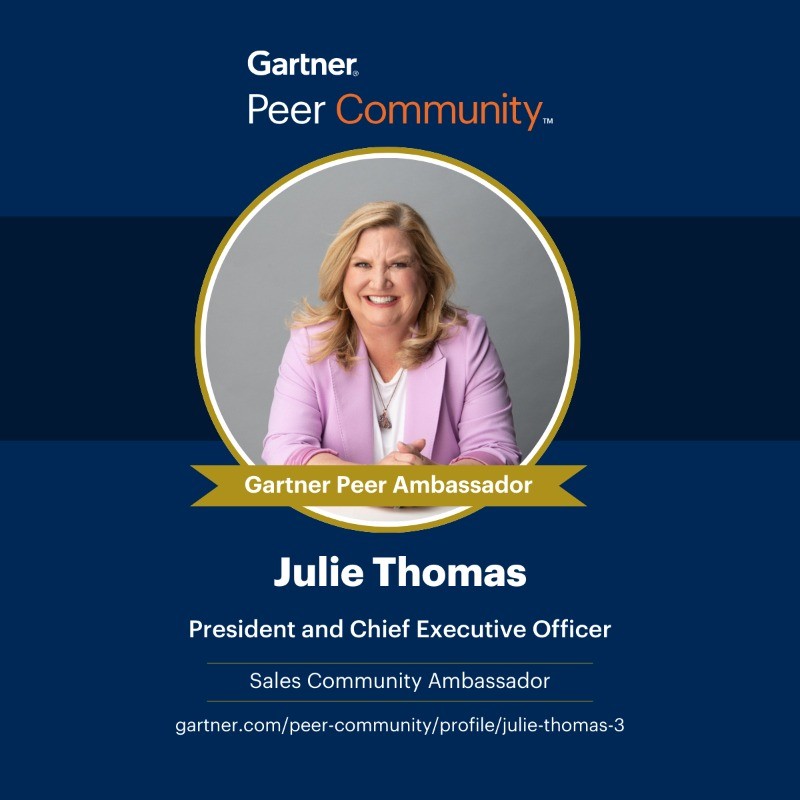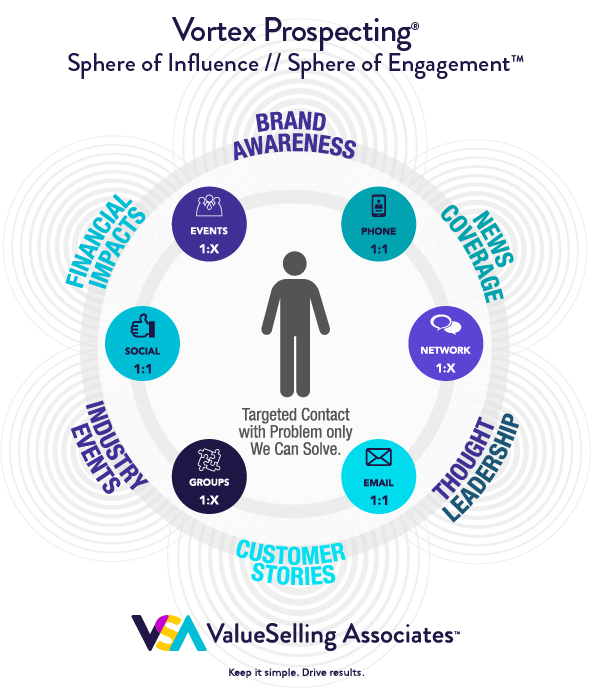Prime Your Revenue Engine with a Prospecting Cadence
Editor's Note: Enjoy this special encore post, which was one of our readers' favorites in 2020. It originally published on February 20, 2020.
Editor’s Note: This guest post was contributed by Julie Thomas, CEO of ValueSelling Associates
Prospecting is one of the hardest tasks a sales professional must undertake. Getting busy people that you don't know to accept a meeting to discuss something they don't think they need is the most difficult part of sales. We see all too frequently that reps, in general, have a fear of picking up the phone, so they only send out emails. Yet, the odds of connecting with a prospect increase when they use multiple communication channels, and the measure of their success is their ability to keep at it.
One way for sales to successfully fill the revenue pipeline with qualified prospects is to create a sales cadence for prospecting. A sales cadence is a sequence of strategically choreographed sales activities that a rep follows to connect with prospects, and it typically includes scheduling time for social media interactions, email exchanges, and phone calls. Sales cadences are helpful, because this approach gives sales reps a systematic framework to follow.
The primary objective of the prospecting cadence is to have a live conversation with a potential buyer to gather basic information and learn if an opportunity could exist. If an opportunity could be possible, the ultimate goal is to schedule the first meeting with the potential customer.
As we kick-off the New Year and new decade, start with these three great prospecting habits.
1. Block non-negotiable time on your calendar daily to focus on prospecting.
The ValueSelling-Selling Power study indicates that such prospecting just isn’t happening; respondents said only 18% of their sales reps spend nine hours or more on weekly prospecting. Ideally, reps should spend an average of two hours per day or 10 hours per week on proactive prospecting.
Be disciplined and hold yourself accountable to carve out time each day on your calendar to prospect. When I say block non-negotiable time on your calendar, I mean don't cancel the time you set aside for prospecting when something else comes up: reschedule it instead.
For instance, let’s say you blocked from 10am to 11am on your calendar for prospecting, but your boss calls at 10am and asks you to get X, Y, Z done by 11am. Obviously, you’re going to say yes to your boss. But, then, look at your calendar and move your block of time scheduled for prospecting to a different time slot, because you can't just cancel it.
Remember, time is the one asset we don’t get back. If we don’t protect our time, something else will come along and usurp it, and then all of a sudden the next thing you know your pipeline does not look so good — and that commission check you thought you were going to get just got smaller.
2. Flip the script.
Let’s be honest, when sales reps contact people that aren't expecting your call or email we are an interruption. So, it's critical to figure out how to be a value-added interruption. Chances are your content is about you, not your buyer. Prospects don’t care about your products or your need to schedule meetings and hit quota. They care about the business outcomes you can provide for them. According to a HubSpot survey, 69% of buyers say they respond to primary research relevant to their business. Flip your script from your needs to those of your prospect. This way you’re uncovering value from the buyer’s perspective.
Sales reps can differentiate themselves by preparing for each sales interaction with proper research on the prospect, their company and their industry. Then connect that research with personalized and compelling messaging about your prospect’s business problems, needs, wants, and desires to entice them to take your meeting. When this value-added content is intriguing and interesting, the potential buyer ultimately wants to learn more and is therefore willing to talk with you.
3. Use an ominchannel approach.
Without knowing a prospect’s preferred method of communication, sales reps need to sequence multiple messages to potential buyers using multiple communication methods over time. Here’s an example of implementing a partial sales cadence using an omnichannel approach:
- Day 1: Meet prospect at an event
- Day 3: Email prospect with value add
- Day 5: Call prospect, be prepared to leave a message
- Day 8: Send a LinkedIn Message to the prospect, asking to connect
- Day 11: Follow a prospect on social media, like and comment on their content or company content
- Day 13: Call prospect
- Continue to schedule multiple touches over a 30- to 35-day time period.
Mixing up the sequencing of events and the communication vehicles for sales outreach can increase mindshare and keep opportunities warm until buyers are ready to talk.
More than half of sales professionals (54%) say it takes more than five touch points, such as phone calls, emails, and social media outreach, to book an initial meeting. In 44% of cases, it took 6-10 touch points and in 10% of cases, 11 or more touches were required. That’s why discipline, tenacity, and determination are necessary skills in sales.
Block non-negotiable time on your calendar to create a sales cadence for prospecting
For more tactics on creating a sales cadence to drive top of funnel growth, you can listen to this ValueSelling Associates recorded webinar and view the slide deck.
Persistence pays off
Most sales reps give up too soon when prospects don’t phone them back after a couple attempts. Research shows that it takes anywhere from five to more than 11 touches to get in front of a buyer. Having the discipline to commit to prospecting every day will minimize the likelihood that you're giving up too soon on that outreach.
By adhering to a consistent, repeatable prospecting process, sales reps will secure more meetings and increase conversions for the ultimate goal: an increase in the quantity and quality of the revenue pipeline.
For more of the latest thinking in sales, subscribe to the LinkedIn Sales Blog today.
Topics: Sales prospecting
Related articles







